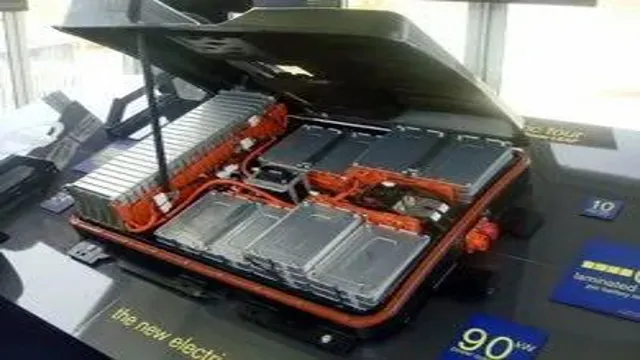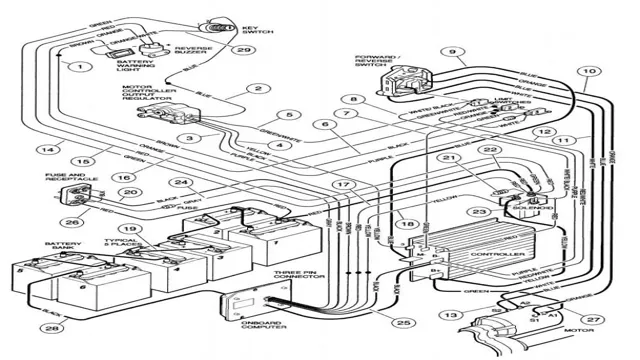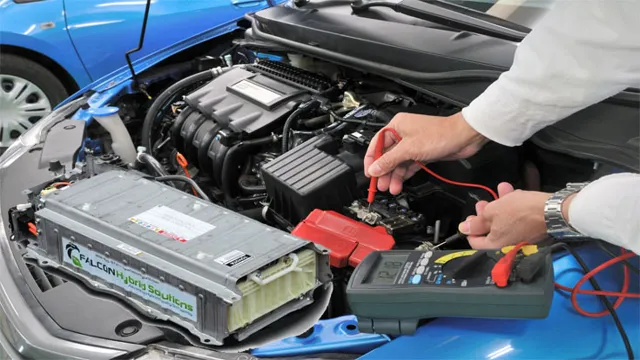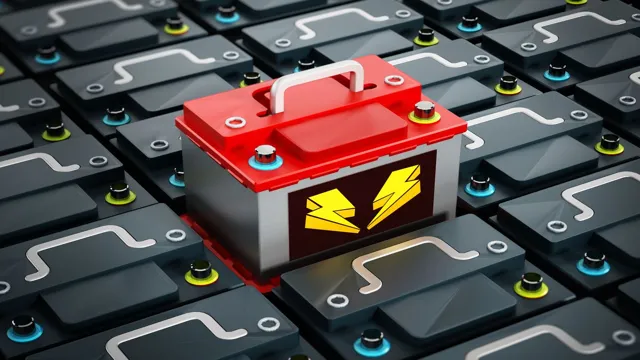Why Your Car Battery Isn’t Charging with an Electric Charger: Common Causes and Solutions
Electric chargers are a convenient solution for modern drivers who want to keep their car battery charged. However, there can be times when your car battery isn’t charging with an electric charger, leaving you feeling frustrated and wondering what went wrong. Several factors can contribute to this problem, and it’s essential to understand the causes to know how to fix it.
In this blog, we’ll explore some possible reasons why your car battery isn’t charging with an electric charger and what you can do about it. So buckle up and let’s hit the road!
Possible Causes
If your car battery doesn’t seem to charge when using an electric charger, there may be a few possible causes. One of the most common issues is a faulty charger. Check to make sure that it is compatible with your battery and that each component is functioning properly.
It is also possible that the battery itself is faulty or has reached the end of its lifespan. Another potential cause could be a poor connection between the charger and the battery. Make sure the cables are connected securely and there is no corrosion on the terminals.
Additionally, extreme temperatures can also have an impact on your battery’s ability to charge. If none of these issues seem to be the cause, it’s possible that you may need to take your car to a professional to diagnose the problem.
Faulty Charger
A faulty charger can be a major inconvenience for anyone trying to charge their device. There could be multiple reasons for the charger not working properly. One possible cause could be a damaged cable, which can cause the charger to malfunction and not charge the device properly.
Another reason could be a damaged power brick, which is responsible for converting AC power to DC power and sending it to the device being charged. A damaged power brick can cause the charger to fail to work altogether. Additionally, a faulty port on the device being charged can also result in charging issues.
It’s important to identify the cause of the problem before attempting any repairs or replacements. A quick solution could be to try a different charging cable or power source to see if the issue persists. If the issue continues, it may be necessary to replace the charger altogether.
Don’t let a faulty charger hold you back from using your device, always make sure to take care of your charger and identify any issues as soon as possible.

Loose Connections
When it comes to loose connections, there are a number of possible causes. One of the most common is age and wear and tear on the components. Over time, connections can become worn, leading to increased resistance and decreased performance.
Another possible cause is environmental factors, such as exposure to moisture or temperature extremes. In some cases, loose connections can be the result of improper installation or maintenance, or simply a lack of attention to detail. Regardless of the cause, it’s important to identify and address loose connections promptly to avoid potentially dangerous situations and maintain system performance.
By taking the time to identify and address loose connections, you can ensure that your system remains safe, reliable, and effective for years to come.
Battery Age and Condition
Battery age and condition can be affected by a number of different factors. One of the most common causes of reduced battery life is simply the age of the battery itself. Over time, the chemicals inside the battery can break down and the battery may no longer be able to hold a charge like it once did.
Additionally, extreme temperatures can also have a significant impact on battery life. If a battery is exposed to very high or very low temperatures for an extended period of time, it may become damaged and suffer from reduced performance. Finally, overcharging or undercharging a battery can also cause damage over time, so it’s important to avoid leaving a battery plugged in for too long or waiting until it’s completely depleted before recharging.
By being mindful of these factors, it is possible to extend the life of your batteries and ensure that your devices continue to function at their best.
Troubleshooting Steps
If your car battery isn’t charging with an electric charger, there are a few troubleshooting steps you can take before resorting to buying a new battery. First, check to make sure the charger is functioning properly and is compatible with your battery. Double-check the connections and try cleaning any dirt or corrosion from the terminals.
If the charger and connections are working correctly, then it may be a problem with the battery itself. Check the water levels in the battery and add distilled water if necessary. If the water levels are fine, then it could be a sign that your battery is old and needs to be replaced.
By following these steps, you can identify the problem and find a solution before spending money on a new battery.
Check Charger Compatibility
When it comes to troubleshooting your device’s charging issues, checking the charger’s compatibility is a crucial step. Many people make the mistake of using chargers that are not meant for their device, resulting in slow charging or no charging at all. Incompatible chargers can also damage your device’s battery, causing long-term issues.
Therefore, it’s essential to ensure that you’re using the correct charger for your device. One good way to check charger compatibility is to refer to the device’s manual or manufacturer’s website for recommendations. Another way is to compare the charger’s voltage and amperage with your device’s requirements.
It’s important not to use chargers with higher or lower voltage/amperage as stated in your device’s manual, as this can cause significant damage to your device, and in some cases, even become a safety hazard. By checking the charger compatibility, you can save yourself time, money, and extend your device’s battery life.
Inspect Connections
When troubleshooting network issues, one important step is to inspect connections. This means checking all the cables and wires to make sure they are securely connected and not damaged. Loose connections or damaged cables can cause interruptions in the network and result in slow internet speeds or even complete network downtime.
It’s also important to check the network devices themselves, such as routers or switches, to ensure they are functioning properly and not causing any issues. If everything appears to be in working order, it may be necessary to run diagnostic tests to identify any underlying network problems. By taking the time to inspect connections, you can prevent potential network issues and ensure a fast and stable network connection for all users.
Test Battery Voltage
If your vehicle is experiencing issues starting, one of the first steps to take is to test the battery voltage. This can be easily done with a multimeter, which can be purchased at any auto parts store. Begin by turning off all electrical components and the engine, then connect the multimeter’s red probe to the positive battery terminal and the black probe to the negative terminal.
A healthy battery should have a voltage of around 16 volts or higher. If the voltage is lower than this, it may indicate a discharged or weak battery that needs to be charged or replaced.
Additionally, if the battery voltage drops significantly while attempting to start the engine, it may also indicate a weak or failing battery. Testing the battery voltage is a quick and simple troubleshooting step that can help determine the root cause of starting issues, and potentially avoid more costly repairs down the road.
Next Steps and Professional Help
If your car battery isn’t charging with an electric charger, there are a few next steps you can take. First, double-check that the charger is compatible with your specific type of car battery. If it’s not, you may need to invest in a different charger.
If the charger is compatible, but your battery still isn’t charging, it may be time to seek professional help. A mechanic can run diagnostics to determine if the issue is with the battery itself or with the charging system in your car. They may also be able to test your battery to see if it needs to be replaced.
Don’t ignore a battery that won’t charge, as it could leave you stranded on the side of the road. Act quickly to get it resolved and enjoy peace of mind on the road.
Battery Replacement Options
If you suspect that your battery needs to be replaced and you’re not comfortable attempting it yourself, the best course of action is to seek assistance from a professional. This may involve going to a store that specializes in device repair or contacting the manufacturer for support. While there may be DIY options available, it’s always best to err on the side of caution when it comes to your electronics.
Professional technicians have the necessary tools and expertise to safely replace your battery, ensuring that it’s done correctly and won’t cause any further damage to your device. By seeking out professional help, you can have peace of mind knowing that your battery replacement is in good hands. So don’t hesitate to reach out if you need assistance – it’s better to be safe than sorry.
Consult a Mechanic
If you’re unsure what to do after identifying a problem with your car, it’s best to consult a mechanic. They have the experience and knowledge to identify the issue and provide an accurate diagnosis. Attempting to fix the issue on your own could lead to bigger and more expensive problems down the line.
A mechanic will be able to provide professional help and guidance, ensuring your car is fixed correctly and safely. They can also offer advice on how to prevent similar issues from happening in the future. Don’t hesitate to seek out a trusted mechanic as your next step.
The keyword “consult a mechanic” has been naturally incorporated throughout the paragraph.
Preventing Future Issues
If you’re consistently encountering problems with your car battery not charging with an electric charger, it may be time to prevent future issues. One major factor that can affect the battery’s performance is weather conditions. Extremely cold or hot temperatures can strain the battery and lead to a decreased lifespan.
To prevent this, ensure that your car is parked in a protected area during extreme weather conditions. Another preventative measure is to properly maintain and clean your battery. Regularly check for signs of corrosion or damage and clean any buildup to maintain optimal performance.
Additionally, make sure that all electrical components in your car are functioning correctly to prevent drain on the battery. By taking these steps, you can help prolong the lifespan of your battery and prevent future charging issues.
Conclusion
Sorry folks, it looks like our trusty car batteries won’t be joining the electric revolution any time soon. Despite the best efforts of our electric chargers, they simply can’t provide the necessary power to jumpstart these old-fashioned powerhouses. Looks like it’s back to the good old days of waiting for a jump from a friendly neighbor or, heaven forbid, turning that key and hoping for the best.
But hey, who needs fancy new technology when you’ve got the thrill of unpredictability? Long live the unreliable, yet charmingly stubborn car battery!
FAQs
Why won’t my car battery charge with an electric charger?
There could be several reasons why your car battery is not charging with an electric charger. It could be due to a faulty charger, a malfunctioning battery, or a problem with the electrical connections.
How can I diagnose if the charger is faulty or the battery?
You can test the charger by trying it with a different battery, or by testing its output with a multimeter. Similarly, you can test the battery by measuring its voltage with a multimeter, or by getting it checked at a car service center.
Can a completely discharged battery be charged with an electric charger?
It is possible to charge a completely discharged battery with an electric charger, but it may take longer than a partially discharged battery. Also, some chargers may not be able to charge a fully flat battery.
What precautions should I take when charging a car battery with an electric charger?
It is important to follow the charging instructions provided with the charger, and to ensure that the charger is compatible with your car battery. You should also wear safety goggles and gloves, and keep the charger away from any flammable materials or liquids. Additionally, you should only charge the battery in a well-ventilated area.





